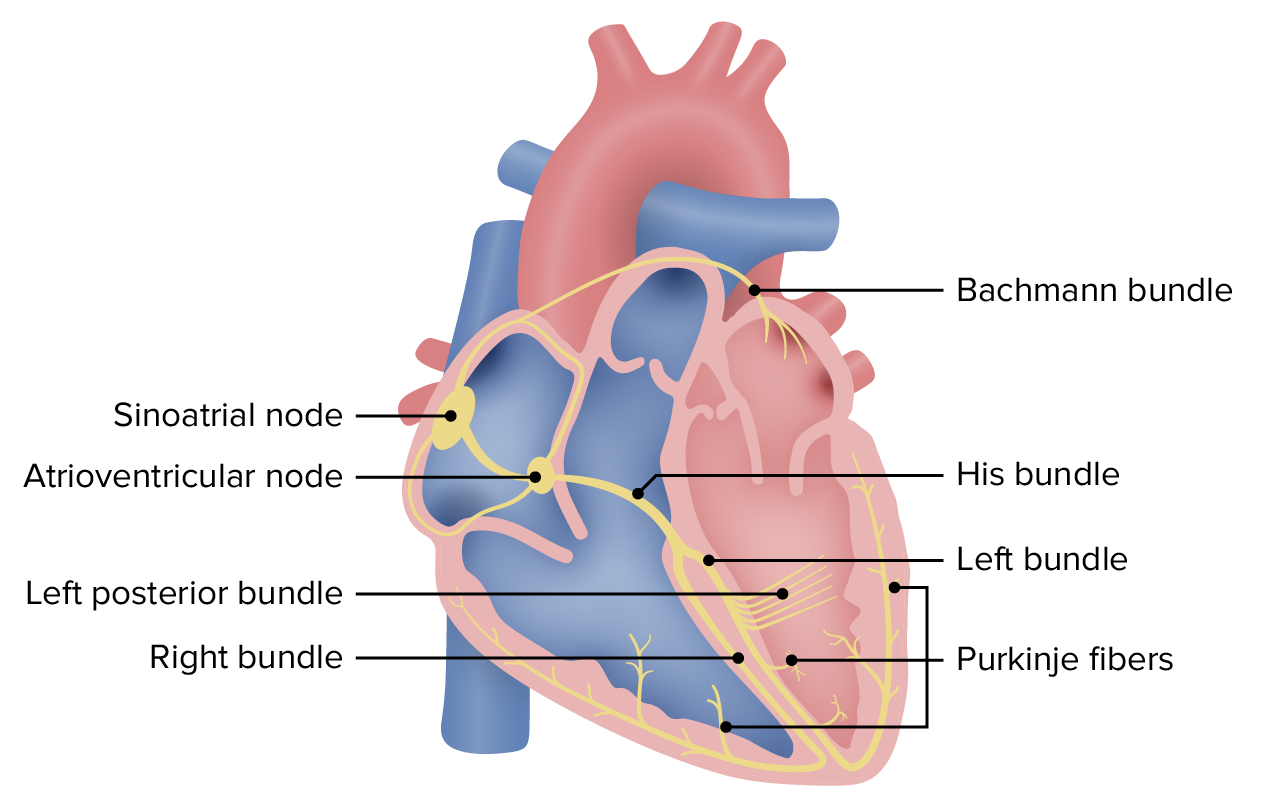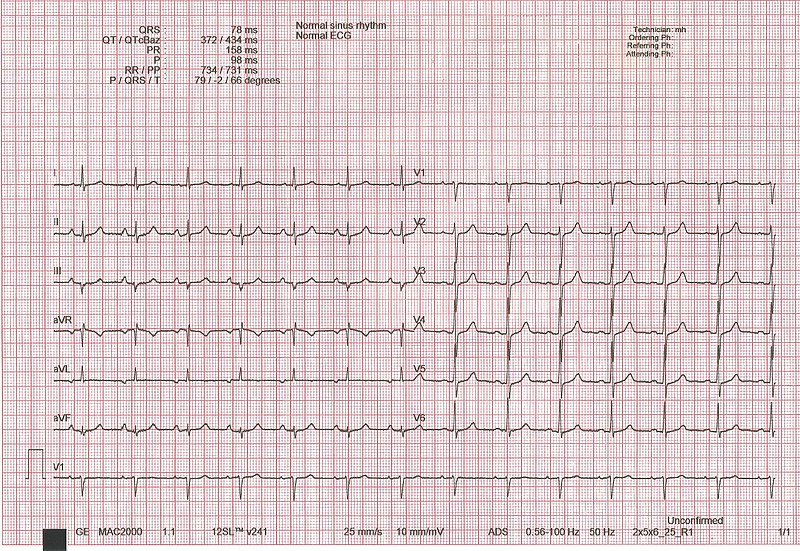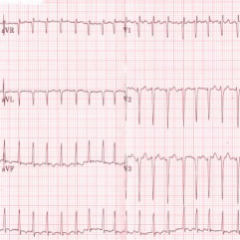Playlist
Show Playlist
Hide Playlist
Tachycardia: Atrial Fibrillation: Diagnosis
-
Slides Tachyarrhythmia Atrial Fibrilation Cardiovascular Pathology.pdf
-
Download Lecture Overview
00:00 Atrial fib, the ECG, irregularly irregular conduction of the ventricles. Not regularly, but irregularly irregular. So, a complete discorrelation or lack of proper organization of EKG beginning with what wave? The P wave. The P wave is completely fibrillated. 00:20 What does that mean? Wave-like pattern. Very obscure, difficult to identify and so, therefore, you don't have proper conduction through the heart. Thyroid function absolutely tested as being one of the differentials, hyperthryoidism may result in atrial fibrillation. Now what you are seeing here is exactly that. Can you find properly a P wave here? On this 12-lead ECG, I do not want you to focus upon what you see V1 where it may then appear as being sawtooth and you chose atrial flutter. Don't do that. If you find majority of your leads here showing you fibrillation as you are seeing and you find an irregular pattern, take a look at the bottom strip here for me. That P wave is in complete chaos. No organization at all. 01:12 And the QRS complex not correlated at all with the P wave. How could it? 300 beats per minute perhaps, really fast and. In addition, take a look at when the QRS complex are showing up. Are they showing up regularly? Irregularly irregular atrial fibrillation. Once again what are you worried about? Clot formation. What are you worried about in terms of your clot formation? Your thrombi embolizing into the carotid artery may result in a stroke. 01:41 In current practice, new oral anticoagulants (or NOACs) are prescribed over warfarin. 01:49 However, there are exceptions, such as intolerance, increased cost, or some cases of chronic kidney disease where warfarin is preferable.
About the Lecture
The lecture Tachycardia: Atrial Fibrillation: Diagnosis by Carlo Raj, MD is from the course Arrhythmias: Basic Principles with Carlo Raj.
Included Quiz Questions
What is the most likely diagnosis in a patient with an embolus in the superior mesenteric artery?
- Acute mesenteric ischemia
- Splenic vein thrombosis
- Intestinal perforation
- Biliary obstruction
- Abdominal aortic aneurysm
What is the pathophysiology of atrial fibrillation?
- Disorganized electrical waves
- Outlet obstruction
- Ectopic foci
- Blood flow stasis
- Shifting of the interventricular septum between beats
Which of the following statements is FALSE regarding the ECG of a patient with atrial fibrillation?
- Every p wave is followed by a QRS complex.
- The rhythm is irregularly irregular.
- Absence of p waves
- QRS complexes do not show up in a regular pattern.
- QRS complexes are dissociated from the p wave.
Customer reviews
5,0 of 5 stars
| 5 Stars |
|
1 |
| 4 Stars |
|
0 |
| 3 Stars |
|
0 |
| 2 Stars |
|
0 |
| 1 Star |
|
0 |
I like that this lectore repeats the main information so I know what is neccessary to know







